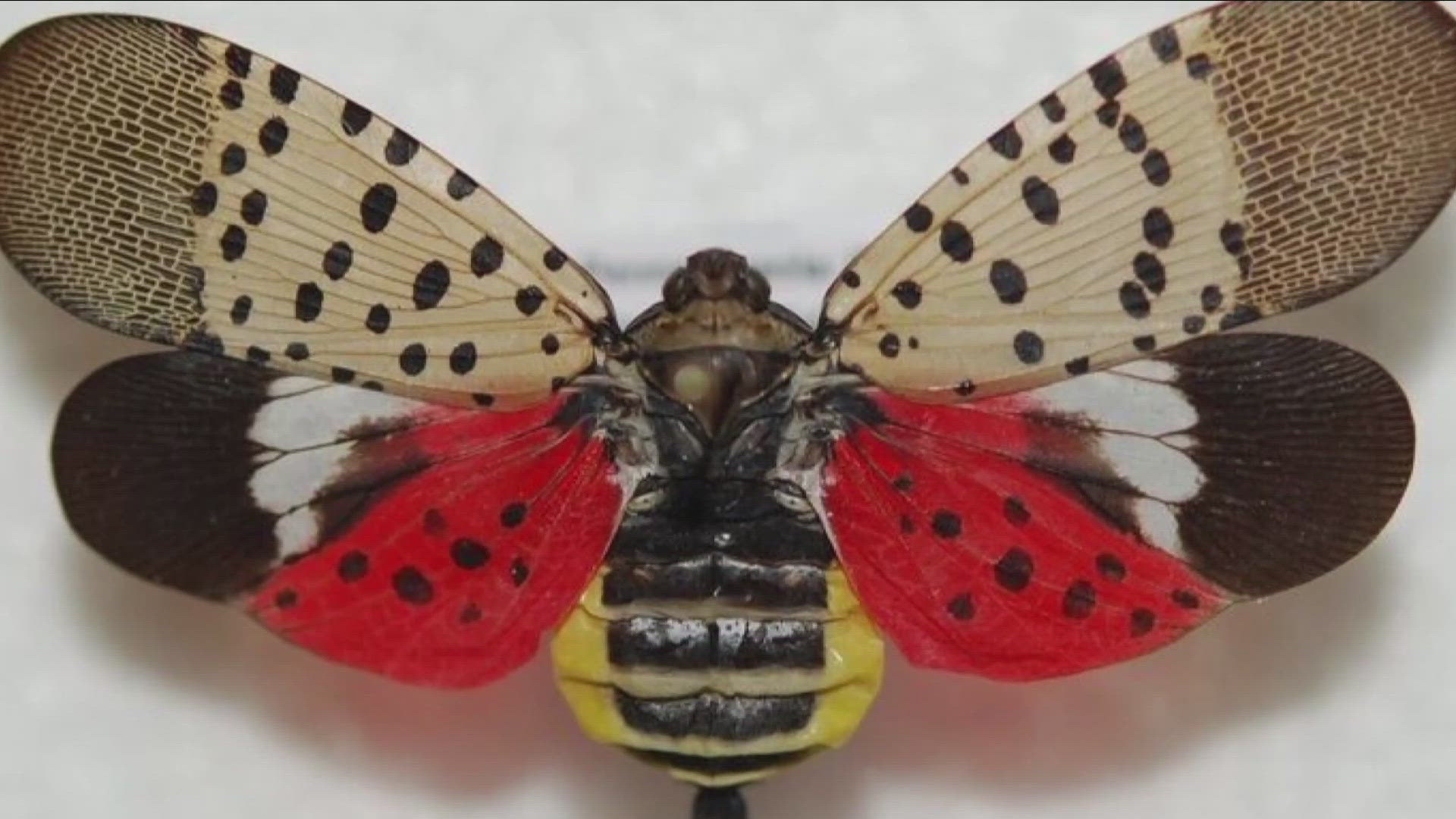ROMULUS, N.Y. — Finger Lakes visitors are being asked to report sightings of the invasive spotted lanternfly.
The New York State Department of Agriculture and Markets found the spotted lanternfly (SLF) in the grape-growing region of the Finger Lakes. Visitors should thoroughly inspect their vehicles, items, and clothing, stated the Department of Agriculture and Markets.
“We have been working with our partners for years to contain spotted lanternfly and slow the spread of this invasive species,” said State Agriculture Commissioner Richard A. Ball. “We are also optimistic that through education, a number of control methods, and with the public’s help, we will be able to manage spotted lanternfly and mitigate the impact on the grape growing industry.”
Spotted lanternfly can lay their eggs on various surfaces like vehicles, stone, metals, furniture, and firewood. They jump and fly short distances and primarily spread through human activity.
The invasive species was first seen on Staten Island in 2020, and the Department of Agriculture and Markets has been working to slow the spread of spotted lanternfly.
“With this news, I encourage everyone to remain vigilant for Spotted Lanternfly and report any sightings. Early detection is crucial as it allows producers in the area to prepare for managing this new invasive species,” noted Brian Eshenaur, Senior Extension Associate, New York State Integrated Pest Management at Cornell University.
According to the State Agriculture Department, the invasive species is currently in the nymph stage. They have black bodies with white spots. As spotted lanternflies mature to the adult stage in July and August, they look red with white spots.
They are about one inch long and half an inch wide.
The invasive species is typically active from July to December. Signs of an infestation are brownish-gray, waxy, mud-like one-inch-long egg masses. Old egg masses look brown and scaly and build up massive honeydew excretions, sometimes with black mold developing.
Spotted lanternfly honeydew excretions interfere with plant photosynthesis – impacting growth, fruit yield, and forest health.
“DEC is working with the New York State Department of Agriculture and Markets and our federal, state, and local partners to investigate this detection and work rapidly to mitigate the impacts of this new infestation,” said DEC Interim Commissioner Sean Mahar. “Public awareness and stewardship are essential to our efforts to manage the spread of Spotted Lanternfly, including destroying adults and eggs whenever and wherever they are encountered, in order to protect our vital agriculture, tourism, and recreation industries.”
If seen, people are asked to take a photo, collect a sample, and place it in a freezer or a jar with rubbing alcohol or hand sanitizer, report at agriculture.ny.gov/reportslf, and kill any additional spotted lanternflies you see by stepping on it or crushing it.
Traps, insecticides, and vacuums can be used to kill spotted lanternflies.
“The Spotted Lanternfly poses a significant threat to the future of the grape industry in New York,” added Sam Filler, Executive Director of the New York Wine & Grape Foundation.
Spotted lanternflies feed on over 100 plant species including grapevine, apple trees, and hops.
According to the New York State Department of Agriculture and Markets, spotted lanternflies can cause at least $300 million worth of damage yearly. It also impacts recreational activities due to its honeydew and the insects it attracts.
You can report sightings here.

